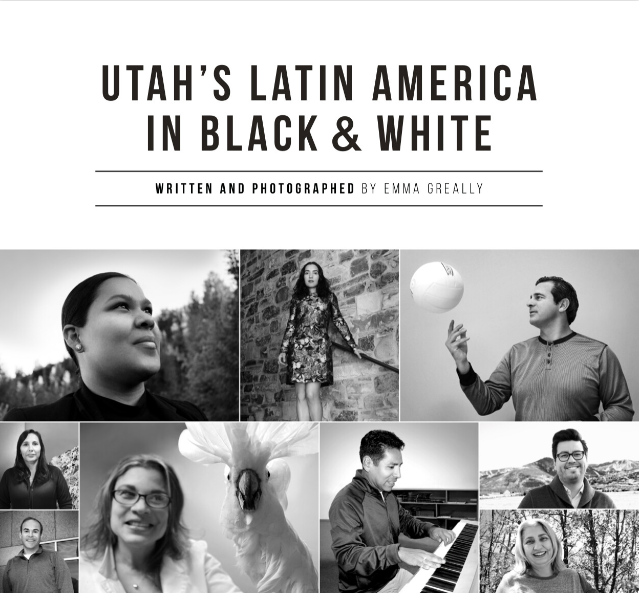Utah's Latin America in Black & White // A Photojournalism Project
The Arts Council is thrilled to introduce a new photojournalism project: Utah's Latin America in Black & White. The project, which was born out of a high school photojournalism class, was created by the remarkable Emma Greally.
Emma is working, through multiple visual outlets, to tell the varied and rich stories of LatinX Utahs and their contributions to our state and society. She says, "Utah’s Latin America in Black & White captures the personalities, fortitude, courage, and passion of my subjects through black and white portraiture and documents their valuable contributions to Utah and the greater United States. Utah is often stereotyped. And yet, it has much to offer with diverse, educated, and interesting people from around the world.”
The current immigration debate in the United States has become riddled, undermined, and inherently synonymous with issues of systemic racism and discrimination. Emma noticed, time and time again, that, “as a society, are faced with a binary, or “black and white,” choice regarding how we treat one another, either with mutual respect or otherwise.” To highlight this binary, Emma chose to photograph her subjects in black and white. Each accompanying interview is presented in both English and Spanish.
While Emma currently attends the Waterford School in Sandy, she spent most of her schooling in Park City’s public school system in the Spanish Dual Immersion Program. She reflects on this time with gratitude for her connections with Park City’s LatinX community. Many of Emma’s subjects are Park City locals, including her fourth grade teacher, a recent graduate of Park City High School, a leader of the Park City Community Foundation (and an Arts Council Board member), and family friends. Emma explains that about 20% of the Park City community is LatinX, and that “our town really wouldn’t function without them.” Especially throughout the Covid-19 pandemic, Emma wants to convey that language, social, and socioeconomic barriers continue to disproportionately affect the LatinX community and immigrants.
Most impressively, the project was student-directed start to finish. Emma chose to photograph most of the subjects in their own homes or workplaces to ensure mutual trust, familiarity, and comfort. While she was initially planning on a physical art exhibition before Covid-19, Emma is excited that the virtual ebook format will be more widely distributed.
Emma’s efforts have extended beyond photojournalism. She also created a short documentary, titled DACAmented. She says, “we’ve screened it at various events for Voices for Utah Children, a multi-issue advocacy organization dedicated to helping Utah youth by raising awareness, influencing policy, and uniting the community. My team and I were awarded the “Student Voice Award” by Voices for Utah Children for our role in providing a voice for the voiceless and telling our stories to the broader local, national, and international communities.”
Emma is a fierce advocate for her community. At one event with Voices for Utah Children a month or two ago, her team helped raise $15,000 for DACA applications and received a commitment from State Superintendent Dickson to allocate funds for student's DACA applications. She is enacting change, opening minds, creating art, and enriching our creative lives.
Finally, Emma stressed the importance of keeping her projects local. With the photojournalism project, any proceeds from physical book copy sales will be donated back to the community. She is particularly grateful for the Park City Community Foundation and the Park City Education Foundation for the work they do for the LatinX community. As she moves through her educational journey, Emma seeks to dovetail her interested in art and public policy, and “become a promoter for the understanding of different communities.”
We couldn’t be more excited to follow her journey!

